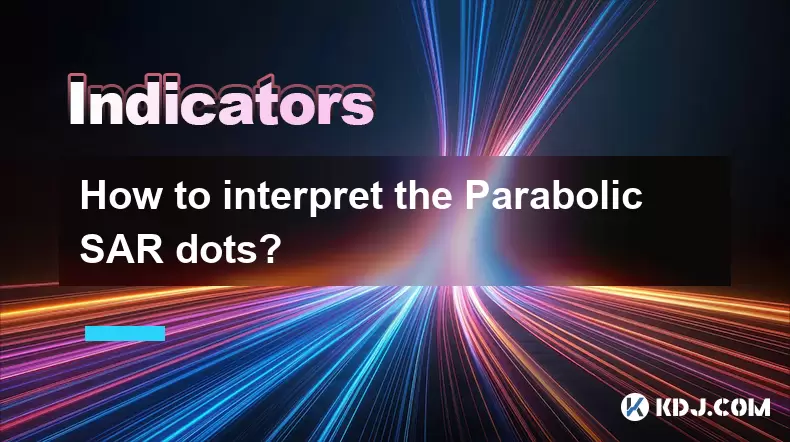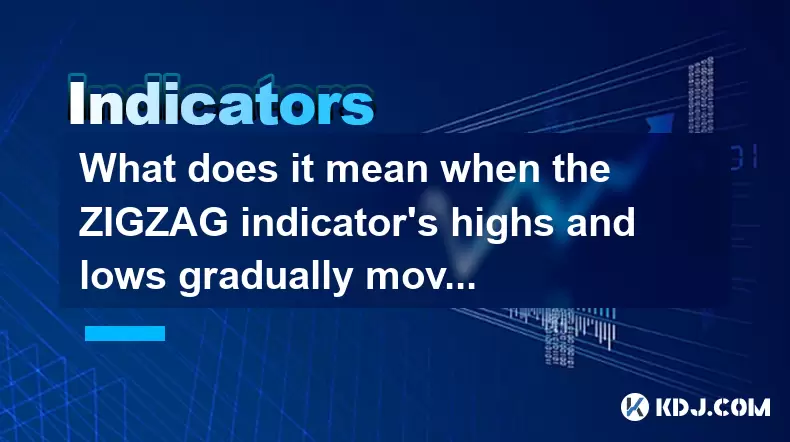-
 Bitcoin
Bitcoin $116600
0.12% -
 Ethereum
Ethereum $4259
5.24% -
 XRP
XRP $3.269
-0.80% -
 Tether USDt
Tether USDt $1.000
0.00% -
 BNB
BNB $805.6
1.49% -
 Solana
Solana $182.0
2.27% -
 USDC
USDC $0.9999
0.01% -
 Dogecoin
Dogecoin $0.2433
6.92% -
 TRON
TRON $0.3361
-0.83% -
 Cardano
Cardano $0.8176
2.77% -
 Hyperliquid
Hyperliquid $43.93
7.66% -
 Chainlink
Chainlink $21.35
9.11% -
 Stellar
Stellar $0.4516
-0.51% -
 Sui
Sui $3.953
2.85% -
 Bitcoin Cash
Bitcoin Cash $572.6
-2.63% -
 Hedera
Hedera $0.2665
1.63% -
 Avalanche
Avalanche $24.50
3.23% -
 Ethena USDe
Ethena USDe $1.001
0.01% -
 Litecoin
Litecoin $121.7
-3.25% -
 Toncoin
Toncoin $3.420
2.01% -
 UNUS SED LEO
UNUS SED LEO $9.006
0.22% -
 Shiba Inu
Shiba Inu $0.00001387
4.90% -
 Uniswap
Uniswap $10.99
-0.28% -
 Polkadot
Polkadot $4.134
4.21% -
 Dai
Dai $1.000
0.00% -
 Pepe
Pepe $0.00001243
4.80% -
 Bitget Token
Bitget Token $4.509
0.19% -
 Cronos
Cronos $0.1576
2.00% -
 Monero
Monero $275.8
1.20% -
 Ethena
Ethena $0.7594
15.99%
How to interpret the Parabolic SAR dots?
The Parabolic SAR helps traders identify trend reversals in crypto markets, with dots below price signaling uptrends and above signaling downtrends.
Aug 06, 2025 at 01:50 am

Understanding the Basics of Parabolic SAR
The Parabolic SAR (Stop and Reverse) is a technical indicator used primarily in cryptocurrency trading to identify potential reversals in price movement. Developed by J. Welles Wilder Jr., this tool appears as a series of dots placed either above or below the price candles on a chart. When the dots are below the price, it signals an uptrend, suggesting that traders may consider holding or entering long positions. Conversely, when the dots appear above the price, it indicates a downtrend, which may prompt traders to consider exiting long positions or initiating short trades. The core function of the Parabolic SAR is to help traders determine optimal stop-loss levels and potential reversal points.
Interpreting the Position of the Dots
The placement of the Parabolic SAR dots relative to the price candles provides critical directional signals.
- If the dots are beneath the current price, this confirms a bullish trend. Each subsequent dot rises gradually, acting as a trailing stop.
- When the price crosses below the dots, a reversal is signaled, and the dots flip to appear above the price, indicating bearish momentum.
- A price crossing above the dots from below triggers a bullish reversal signal, causing the dots to shift underneath the candles.
These flip points are essential for traders using the Parabolic SAR to time entries and exits. The visual nature of the dots makes them accessible even to novice traders, but proper interpretation requires understanding the context of the broader market trend and volume.Adjusting the Acceleration Factor and Maximum Value
The Parabolic SAR formula includes two key parameters: the acceleration factor (AF) and the maximum value (MAX). By default, the AF starts at 0.02 and increases by 0.02 each time a new extreme point (EP) is reached, up to a maximum of 0.20. - A lower acceleration factor makes the dots move more slowly, reducing false signals in choppy markets.
- A higher acceleration factor causes the dots to converge faster toward the price, making the indicator more sensitive.
Traders can adjust these settings depending on the volatility of the cryptocurrency they are analyzing. For highly volatile assets like Bitcoin or Ethereum, a slightly higher MAX value (e.g., 0.25) might be suitable to avoid premature reversals. To modify these settings on most trading platforms: - Open the Parabolic SAR indicator settings.
- Locate the fields for AF step and maximum AF.
- Enter desired values (e.g., 0.03 and 0.30).
- Apply the changes and observe how the dots react to price action.
Using Parabolic SAR in Conjunction with Other Indicators
Relying solely on the Parabolic SAR can lead to misleading signals, especially in sideways or consolidating markets. To improve accuracy, traders often combine it with complementary tools. - Moving Averages: Use a 50-period or 200-period EMA to confirm the overall trend direction. When the price is above the EMA and the SAR dots are below the price, the bullish signal is reinforced.
- Relative Strength Index (RSI): Helps identify overbought or oversold conditions. A SAR reversal signal coinciding with an RSI reading above 70 (overbought) strengthens a potential short opportunity.
- Volume Indicators: A spike in trading volume during a SAR dot flip increases the reliability of the reversal signal.
For example, if the SAR dots shift above the price during a sharp drop in Bitcoin and the RSI drops below 30, this convergence supports a bearish outlook. Always ensure multiple indicators align before executing a trade.Recognizing Limitations and False Signals
The Parabolic SAR performs best in trending markets but tends to generate false signals during consolidation phases. In a ranging market, the dots may flip back and forth rapidly, leading to whipsaws. For instance, if Ethereum trades within a tight band for several hours, the SAR dots may alternate above and below the price, suggesting multiple reversals that fail to materialize. To mitigate this: - Avoid trading SAR signals when the Average Directional Index (ADX) is below 20, as this indicates weak trend strength.
- Use horizontal support and resistance levels to filter SAR signals. A dot flip near a known resistance zone carries more weight than one in open space.
- Zoom into higher timeframes (e.g., 4-hour or daily charts) to reduce noise and confirm trend validity.
Practical Example: Applying Parabolic SAR on a Crypto Chart
To apply the Parabolic SAR on a cryptocurrency chart using a platform like TradingView: - Navigate to the chart of your chosen asset (e.g., Solana/USDT).
- Click on the "Indicators" button located at the top of the chart.
- Search for "Parabolic SAR" in the indicator library.
- Select the indicator and add it to the chart.
- Customize the settings if needed (AF step, MAX value).
- Observe how the dots align with price action over the past week.
Suppose the dots were below the price for three consecutive days, then flipped above during a 10% drop. This indicates a confirmed trend reversal. Traders might use this as a cue to close long positions or set stop-loss orders just above the most recent dot.Frequently Asked Questions
What does it mean when Parabolic SAR dots cluster tightly together?
Tight clustering usually occurs during strong, sustained trends. When the dots are close and steadily moving in one direction, it reflects consistent momentum. In a fast-moving crypto market, this could indicate a powerful breakout phase where the acceleration factor is increasing rapidly.Can Parabolic SAR be used on intraday timeframes for cryptocurrencies?
Yes, it is commonly applied on 15-minute, 1-hour, and 4-hour charts. However, due to increased volatility in short timeframes, the default settings may produce excessive signals. Adjusting the acceleration factor downward (e.g., 0.01 step) can help reduce noise and improve reliability.How do I know if a Parabolic SAR reversal is valid?
A valid reversal requires the price to close decisively beyond the dot. For example, if the last dot was at $30,000 for Bitcoin and the next candle closes at $29,950 with the new dot above the candle, the reversal is confirmed. Avoid acting on wicks or intrabar crosses.Is Parabolic SAR effective for all cryptocurrencies?
It works best on major cryptocurrencies with consistent volume and clear trends, such as BTC, ETH, and BNB. Low-cap altcoins with erratic price action may generate unreliable SAR signals due to low liquidity and high volatility. Always assess the asset’s trading behavior before relying on the indicator.
Disclaimer:info@kdj.com
The information provided is not trading advice. kdj.com does not assume any responsibility for any investments made based on the information provided in this article. Cryptocurrencies are highly volatile and it is highly recommended that you invest with caution after thorough research!
If you believe that the content used on this website infringes your copyright, please contact us immediately (info@kdj.com) and we will delete it promptly.
- Solana Meme Coin Presales: Hype or the Next Big Thing?
- 2025-08-10 02:50:12
- Pi Network, Altcoin Season, and Breakout Tokens: What's Hot in 2025?
- 2025-08-10 02:50:12
- Decoding Crypto Presales: Is Cold Wallet the New Neo Pepe?
- 2025-08-10 02:30:12
- PEPE's Moonshot Ambitions: Will the Memecoin Rally Continue?
- 2025-08-10 03:50:11
- Dogecoin, ROI, and the Meme Coin Mania: Is Little Pepe the Next Big Thing?
- 2025-08-10 03:50:11
- Cryptos, 2025, Market Caps: Riding the Next Wave
- 2025-08-10 02:30:12
Related knowledge

What does it mean when the price is trading above the SAR indicator but the red dots are densely packed?
Aug 09,2025 at 11:49pm
Understanding the SAR Indicator and Its Visual SignalsThe SAR (Parabolic Stop and Reverse) indicator is a technical analysis tool used primarily to de...

What does it mean when the MACD histogram continues to shorten but the price reaches a new high?
Aug 09,2025 at 09:29pm
Understanding the MACD Histogram and Its ComponentsThe MACD (Moving Average Convergence Divergence) indicator is a widely used technical analysis tool...

What does it mean when the Triple Moving Average (TRIX) turns downward but the price doesn't fall?
Aug 09,2025 at 12:42pm
Understanding the Triple Moving Average (TRIX) IndicatorThe Triple Moving Average, commonly known as TRIX, is a momentum oscillator designed to filter...

What does it mean when the 10-day and 30-day moving averages repeatedly intertwine?
Aug 10,2025 at 02:42am
Understanding Moving Averages in Cryptocurrency TradingMoving averages are among the most widely used technical indicators in the cryptocurrency tradi...

What does it mean when the CCI indicator continues to hover below -100?
Aug 10,2025 at 04:21am
Understanding the CCI Indicator and Its Baseline ValuesThe Commodity Channel Index (CCI) is a momentum-based oscillator used in technical analysis to ...

What does it mean when the ZIGZAG indicator's highs and lows gradually move downwards?
Aug 10,2025 at 02:14am
Understanding the ZIGZAG Indicator in Cryptocurrency TradingThe ZIGZAG indicator is a popular technical analysis tool used by cryptocurrency traders t...

What does it mean when the price is trading above the SAR indicator but the red dots are densely packed?
Aug 09,2025 at 11:49pm
Understanding the SAR Indicator and Its Visual SignalsThe SAR (Parabolic Stop and Reverse) indicator is a technical analysis tool used primarily to de...

What does it mean when the MACD histogram continues to shorten but the price reaches a new high?
Aug 09,2025 at 09:29pm
Understanding the MACD Histogram and Its ComponentsThe MACD (Moving Average Convergence Divergence) indicator is a widely used technical analysis tool...

What does it mean when the Triple Moving Average (TRIX) turns downward but the price doesn't fall?
Aug 09,2025 at 12:42pm
Understanding the Triple Moving Average (TRIX) IndicatorThe Triple Moving Average, commonly known as TRIX, is a momentum oscillator designed to filter...

What does it mean when the 10-day and 30-day moving averages repeatedly intertwine?
Aug 10,2025 at 02:42am
Understanding Moving Averages in Cryptocurrency TradingMoving averages are among the most widely used technical indicators in the cryptocurrency tradi...

What does it mean when the CCI indicator continues to hover below -100?
Aug 10,2025 at 04:21am
Understanding the CCI Indicator and Its Baseline ValuesThe Commodity Channel Index (CCI) is a momentum-based oscillator used in technical analysis to ...

What does it mean when the ZIGZAG indicator's highs and lows gradually move downwards?
Aug 10,2025 at 02:14am
Understanding the ZIGZAG Indicator in Cryptocurrency TradingThe ZIGZAG indicator is a popular technical analysis tool used by cryptocurrency traders t...
See all articles

























































































